Recently in town for the launch of The Candy Collection for Lasvit, Humberto Campana – one-half of the Campana brothers – tells Stephanie Peh why it is important to preserve the work of age-old artisans.

February 24th, 2016
Top Image: Humberto Campana at the Lasvit Factory working on The Candy Collection. Image courtesy of Lasvit
Design duo Fernando and Humberto Campana – otherwise known as the Campana Brothers – grew up in the ’60s in the countryside of Brazil, where a trip to São Paulo would take six hours (it takes two hours today). The brothers spent a great deal of their childhood immersed in nature and isolated from the city. Occasionally, they would visit the theatres for Italian movies and return home to recreate impressions of film sets and objects they saw using scrap materials.
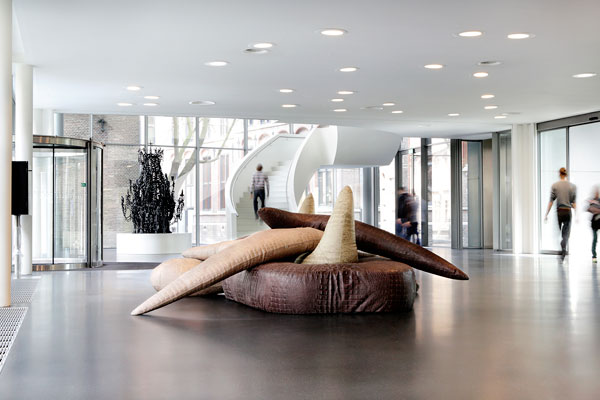
Stedelijk Museum, entrance area. Image: © Inga Powilleit
Their childhood forms the foundation of a hands-on design process that would later propel the Brazilian designers within an industry dominated by European players – although it was not until much later that the brothers decided to work together. Upon graduation from law school, Humberto changed his course and began sculpting handcrafted products such as baskets and mirrors. He set up a small studio and invited Fernando, who studied architecture, to help him during a busy season. They have been working together since.
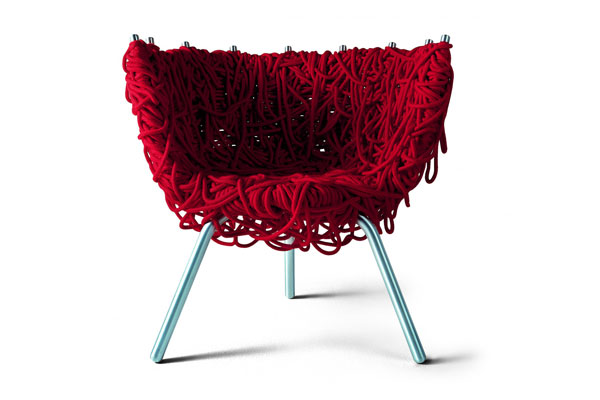
Vermelha Chair, 1998. Image courtesy of Edra and Estudio Campana
In the ’90s, the brothers produced a lot of work but struggled financially. Their breakthrough came when the late Massimo Morozzi, then art director of Italian brand Edra, called the studio after discovering the Vermelha chair in a book titled 50 Chairs by Mel Byars. Morozzi sought to produce the chair and worked with the brothers to realise the unconventional manufacturing process that revolves a hand-weaving technique with 500-metre rope. Following videos, sketches and a few phone calls, Edra placed the chair in production in 1997. It was presented at the Milan Furniture Fair in 1998. The brothers’ lives have changed radically since.
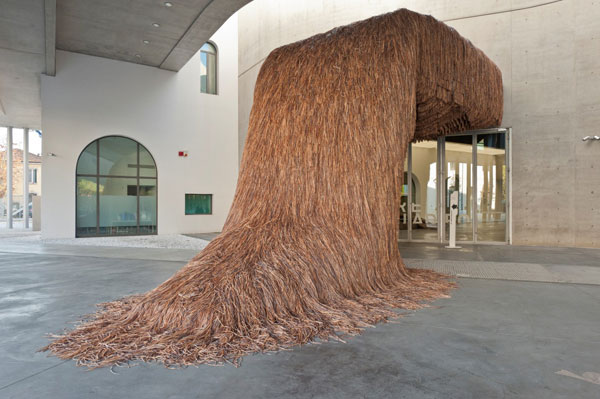
RE-CYCLE MALOCA, 2011. Image: © Sebastiano Luciano, courtesy of Fondazione MAXXI
Today, their work spans disciplines and transcends conventions of how materials can be employed. Their process can be described as investigative, resulting in unpredictable outputs. Decades of experience enable the brothers to find balance between artistry and commerce.
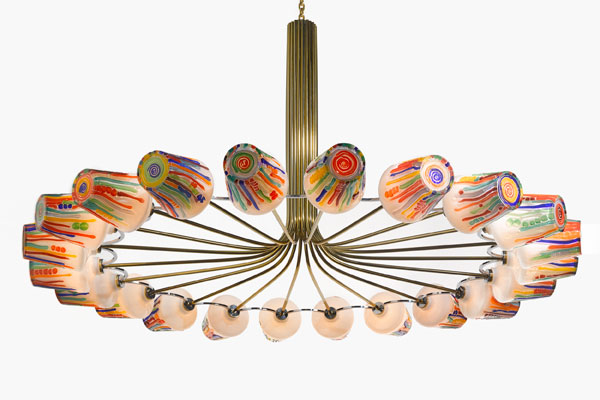
Ring chandelier from The Candy Collection for Lasvit. Image courtesy of Lasvit
They remain loyal to an original hands-on approach. For the brothers, ideas often take shape on paper or straight at the workshop in direct collaboration and conversation with artisans. A case in point is The Candy Collection, recently created by the brothers for Lasvit. Inspired by candies found in Brazilian markets, the kaleidoscope of colours and conical features of the collection were achieved over various on-the-spot testings and exchanges with the Czech glass artisans.
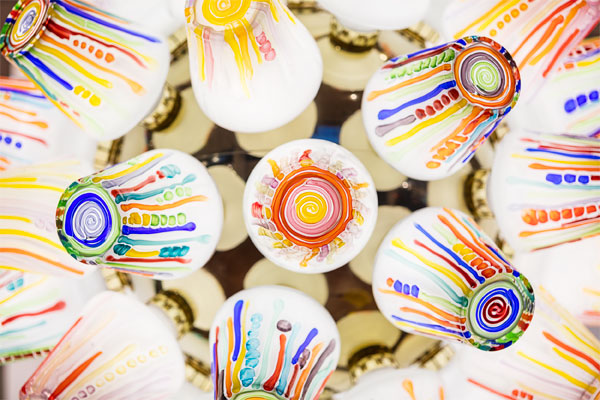
Close up of Sphere Chandelier from The Candy Collection for Lasvit. Image courtesy of Lasvit
Spending quality time with artisans is important to the brothers, who believe that it would expand their ‘design universe’ with ideas, as they abhor labels and prefer to design freely. Aside from furniture design, the brothers have also been commissioned in fields of urban sculptures, interior, landscape and fashion design. Here, Humberto reveals the heart of their work.
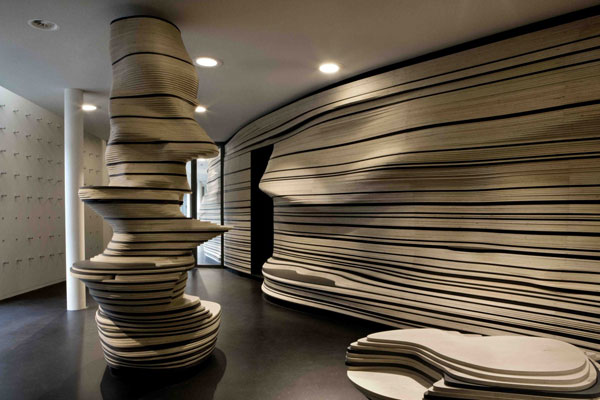
Stedelijk Museum 2013. Image: © Inga Powilleit and courtesy of Estudio Campana
You’ve said that design is a political tool and have worked on several projects to promote change. What has been your most heartening project to date?
We did a collection with an artisan in Brazil last year. After visiting his atelier in the north of Brazil, I fell in love with it. It is a very remote place in Brazil where he works with leather. In the beginning of the 20th century, his father made clothes for the ‘cangaceiros’, which translates to bandits who steal from the rich to give to the poor. This gentleman inherited the tradition, so he has been making shoes and bags . We invited him to collaborate with us and created support for his work through a furniture collection that launched in Sao Paolo called Cangaço, which is the bandits’ social movement namesake. The collection was exclusively designed for the design-art gallery Firma Casa, who exhibited it at last year’s Design Miami.
This was nice because we helped to rescue a tradition that is disappearing. It is not simply about creating an object, but to understand the history behind it in order to evolve communities.
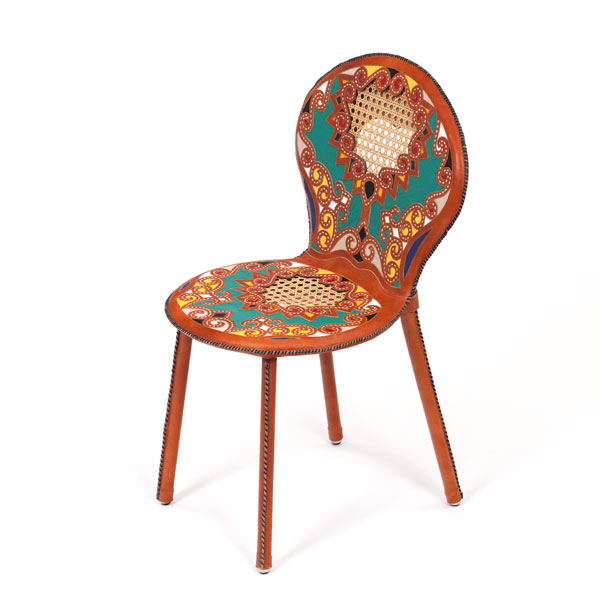
Cangaço chair, 2015. Image: © Fernando Laszlo and courtesy of Estudio Campana and Firma Casa
Working with the artisans is important to you. Do you do that for every project?
Yes. This is very important. We are currently making a collection of lamps using embroidery. We are going to make large faces in embroidery and create a huge installation in April. I am very enthusiastic about that.
I like to work with communities and rescue the self-esteem of artisans by promoting their work. Whenever I approach them, I give them freedom and support, and occasionally challenge them. Instead of table cloth, why not make lamps? The ‘cangaceiros’ gentleman is doing furniture now.
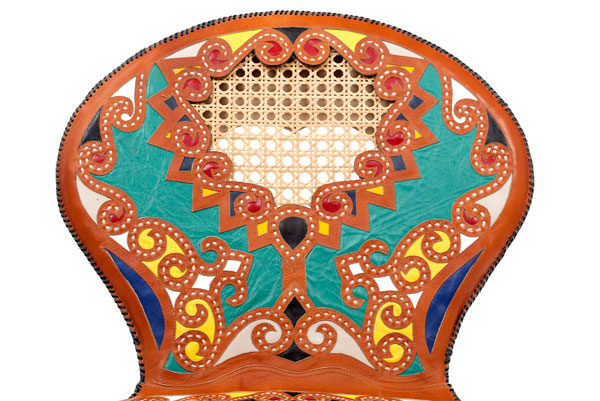
Cangaço chair, 2015. Image: © Fernando Laszlo and courtesy of Estudio Campana and Firma Casa
If you don’t promote [the artisans], they will disappear or remain the same. The contact is rich on both sides. I learn and they learn. They start to feel more confident because someone from the big city has visited their remote factory. In the beginning, they may be resistant [to change], but I push them and in the end we become friends. The relationship builds because we keep things on a very transparent level. Our work does not interfere nor alter the essence of a craftsmen’s work. It gives new opportunities and expands the range of possibilities as techniques can be applied to other functionalities.
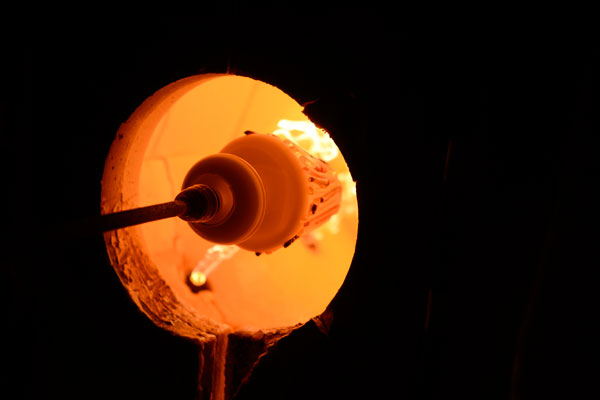
Glasswork for The Candy Collection. Image courtesy of Lasvit
What do you think of the design industry today worldwide and in Brazil itself?
It is changing very quickly. There are many things happening today, such as 3D printing. It is like the laser cut 20 years ago. 3D printing is now the novelty. In a few years, it is not going to be the case. I think the world changes. While there are ups and downs, I think ‘manuality’ will always remain because it is connected to intuition and the act of rescuing traditions. This will never disappear because the machine cannot replicate the work of hands.
The diffusion of design has also changed. There are so many fairs in the design world now, it is not just concentrated at one point.
As for the industry in Brazil, it is growing. There are a lot of good young designers now. This is the good part about globalisation because a lot of people can exchange ideas. Communities of designers create collectivity.

Firma Casa, 2011. Image: © Maíra Acayaba and courtesy of Estudio Campana
Tell us about multiculturalism in Brazil, and how it translates to your work.
Brazil has a dimension of continents – North, South, East and West are completely different. The geography, climate, colonisation – we have Germans, Italians and the largest Japanese community outside of Japan. The Lebanese community in Brazil is bigger than the population in Lebanon. Often an immigrant sees his surroundings with a foreign eye which enriches the diversity of views.
Brazil is a melting pot of cultures with different attitudes and behaviors. The beautiful nature is gorgeous with a lot of materials, fibres and woods. This is very rich. I like to translate that universe into design. Fortunately, because of the size of the country, many locations have not been touched yet by globalisation and secular traditions are still present.
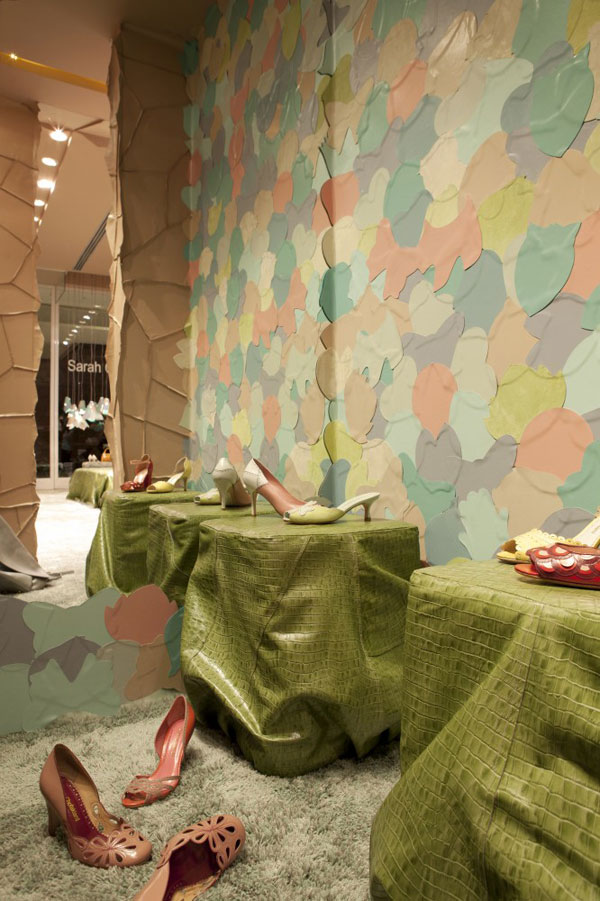
Sarah Chofakian Store, 2012. Image: ©-Fernanado Laszlo and courtesy of Estudio Campana
What is important to you as a designer?
I was going to become a lawyer until I changed my life completely to do something that would take me places. I want to promote the cultural diversity of my country. We created a repertoire of ideas and shapes, which created a new ‘Era of Design’ for Brazil.
Campana Brothers
campanas.com.br
Lasvit is carried in Singapore by Macsk
A searchable and comprehensive guide for specifying leading products and their suppliers
Keep up to date with the latest and greatest from our industry BFF's!

The Sub-Zero Wolf showrooms in Sydney and Melbourne provide a creative experience unlike any other. Now showcasing all-new product ranges, the showrooms present a unique perspective on the future of kitchens, homes and lifestyles.

Suitable for applications ranging from schools and retail outlets to computer rooms and X-ray suites, Palettone comes in two varieties and a choice of more than fifty colours.

Create a configuration to suit your needs with this curved collection.

Marylou Cafaro’s first trendjournal sparked a powerful, decades-long movement in joinery designs and finishes which eventually saw Australian design develop its independence and characteristic style. Now, polytec offers all-new insights into the future of Australian design.

Lasvit delivers ‘Sound of Light’ installation for St. Regis Jakarta, a dynamic glass and light display that responds to music.

The 21st edition of the London Design Festival was a week showcasing the full breadth of talent in the UK capital – from impressive brand collaborations and product launches to inspiring emerging talents.

From mechanical flowers, to gilded-glass forests, Picasso’s second wife and more: these 5 hospitality destinations weave an experiential narrative from the most diverse of references.
The internet never sleeps! Here's the stuff you might have missed

Simon Liley, Principal Sustainability Consultant at Cundall, writes about how cyberpunk dystopias haven’t (quite) come to pass yet – and how designers can avoid them.

Suitable for applications ranging from schools and retail outlets to computer rooms and X-ray suites, Palettone comes in two varieties and a choice of more than fifty colours.